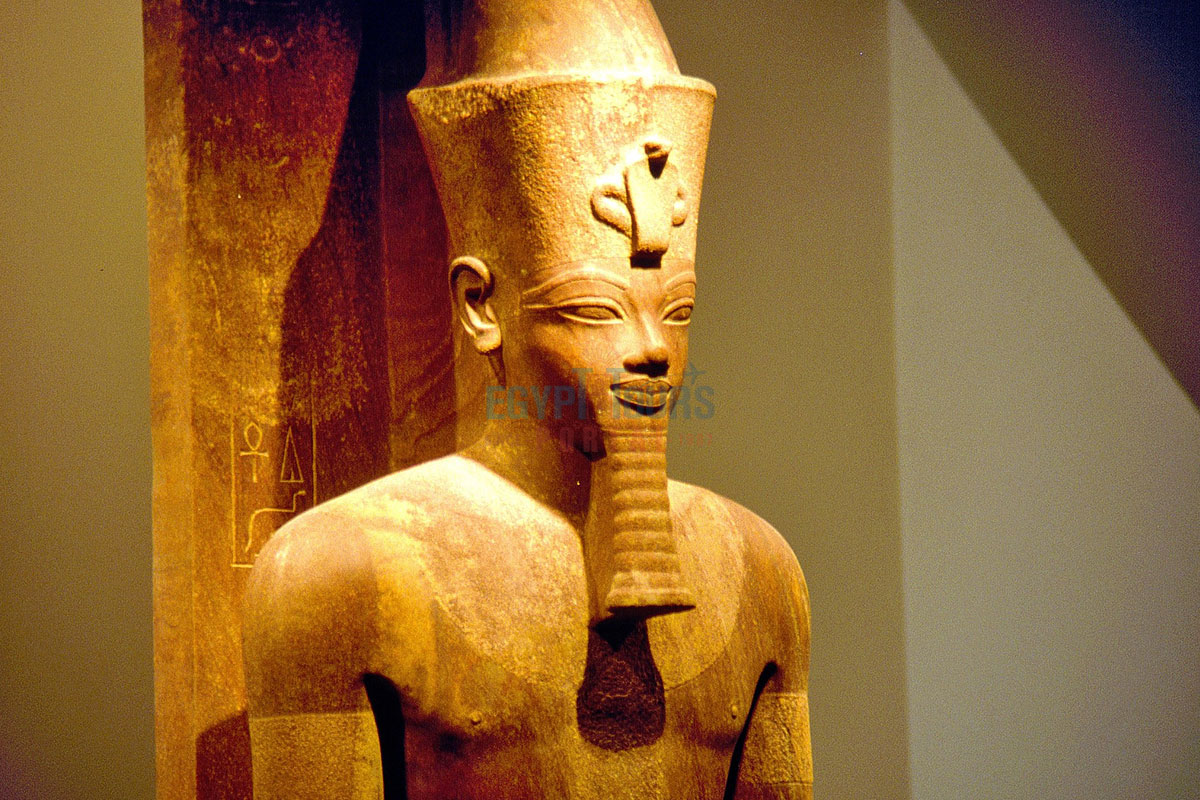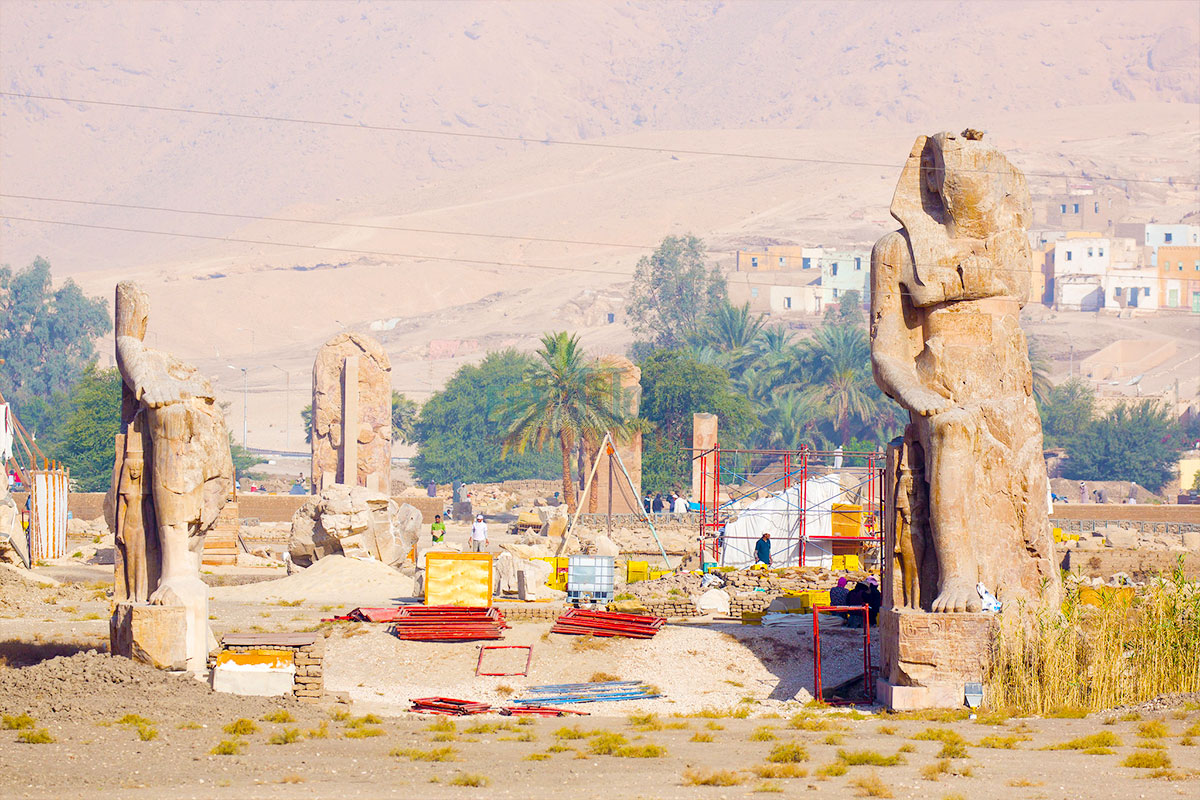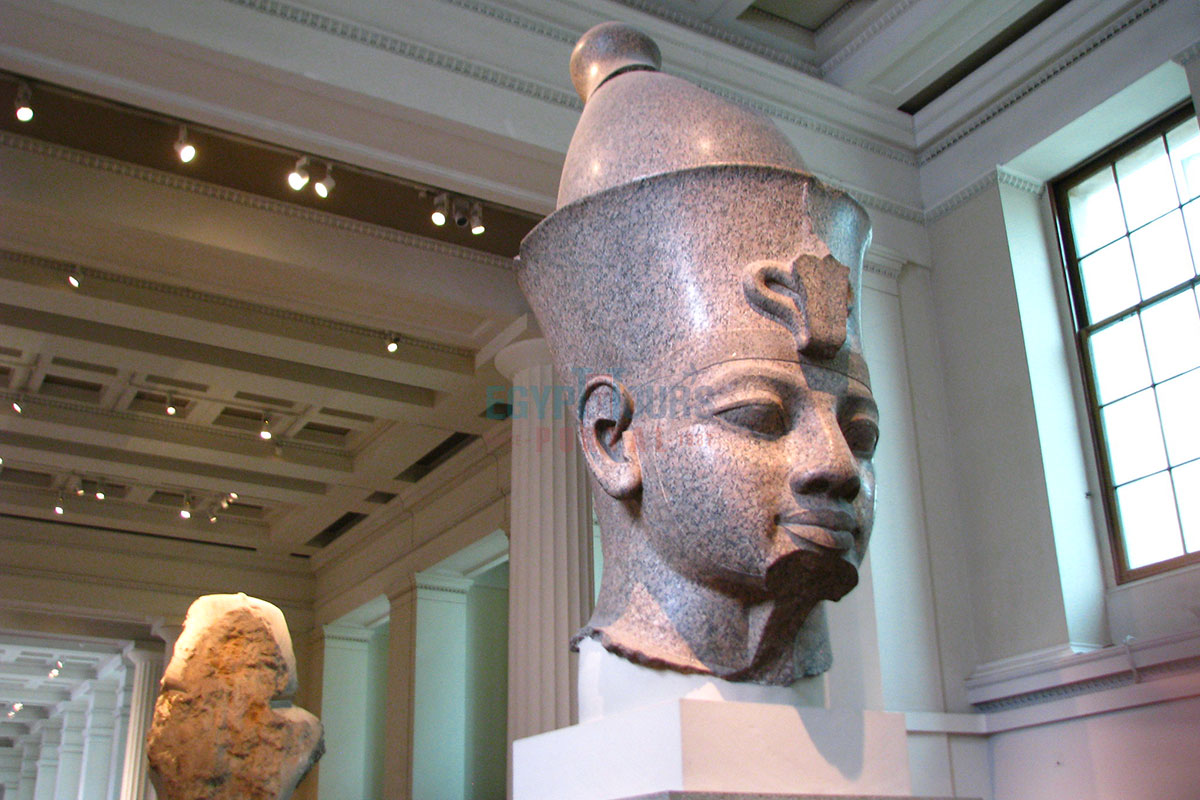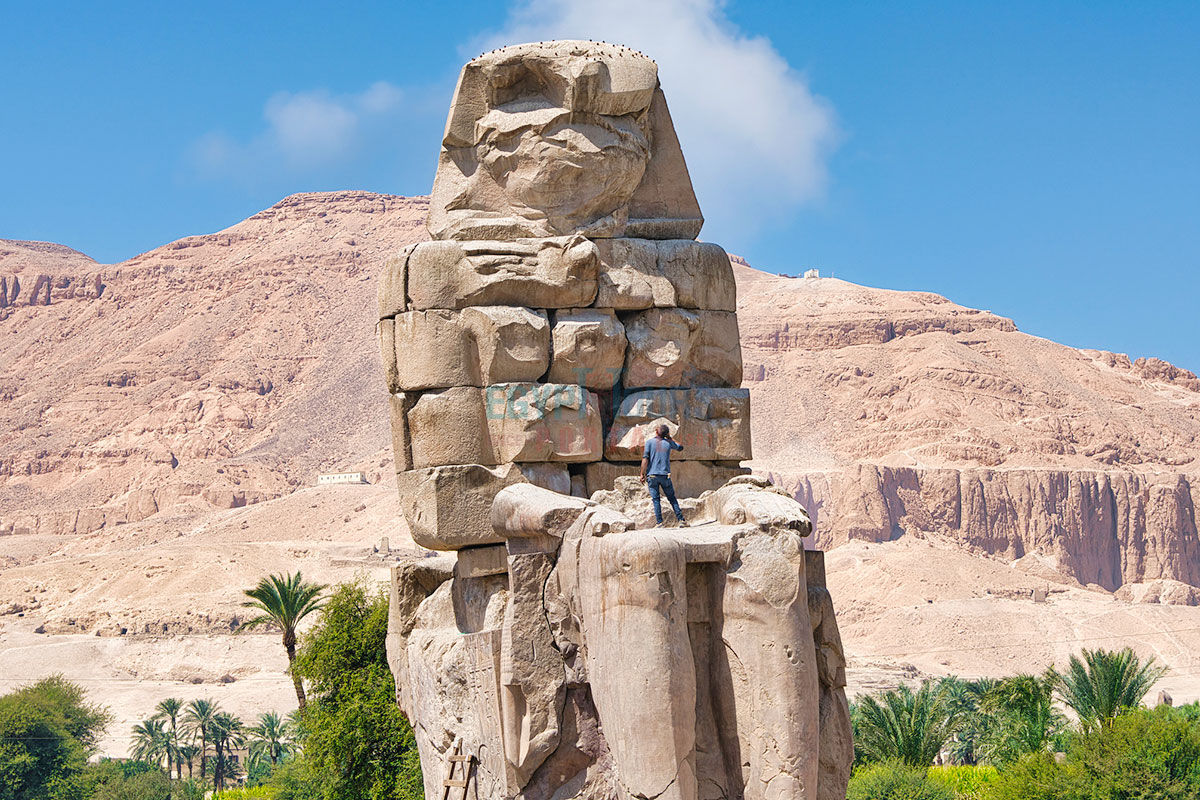
Amenhotep III (1386 – 1353 BC) is known to be the 9th king of the 18th dynasty and is known to be the son of Tuthmosis IV from his minor wife Mutemwiya, the husband of queen Tiye, the father of king Akhenaten, and the grandfather of Tutankhamun. He became Pharaoh at the age of 12 after the passing of his father Thutmose IV and remained in power for 38 years. He married his wife Tiy and gave birth to two sons and four daughters.
His wife Tiye enjoyed equal status to her husband which showcased her equality and harmony in their relationship. He was known to be a great politician and a gifted leader. He was a talented hunter as there are scarabs describing him killing 110 lions during the first ten years of his reign, and a sportsman as mentioned in a number of inscriptions that also show his military expeditions.

His birth name “Amenhotep-Heqawaset” means (Amun is pleased, the Ruler of Thebes) while his throne name Neb-maat-re means ( Lord of Truth is Re). He had a number of nicknames such as Amenhotep the great and Amenhotep the Magnificent.
He is known to have many names which are Amenophis III, Amana-Hatpa, and Amunhotep II which are connected to the concept of the satisfied god Amun plus Nebma’atre who is related to the satisfied god Maat.

Amenhotep III son of Habu dedicated his life to making Egypt maintain the highest levels of prosperity and peace which in turn created an incredible artistic revolution. He was able to set new standards of realism and quality.
He is renowned for crafting the most enchanting monuments and structures all over Egypt across Memphis and more importantly Thebes, expanding the lands of Egypt and his empire through military campaigns into Nubia which enriched Egypt and strengthen its borders.

When he came to the throne of Egypt at the age of twelve, he ruled a great kingdom that ruled supreme, containing immense size, power, and wealth. Throughout his rule, he favored peaceful negations and pursuits over war.
Amenhotep III was a true master of Diplomacy as he made many diplomatic exchanges with other great nations as confirmed by the Amarna Letters which shows he would send lavish gifts of gold to other nations so that they can bend to his will and also it was an exchange for copper, horses, and lapis lazuli, all the way from Asia.
He made political marriages with a number of daughters and sisters from the rulers of Mitanni, Babylon, and Hittite in order to consolidate alliances. During his rule, he made many diplomatic expeditions across Cyprus, Assyria, and more. His high level of generosity and understanding made him establish a number of profitable relationships with all his neighboring countries.
He refused the requests to send Egyptian women as wives to foreign rulers. He improved the entire atmosphere to express the policies and religion which encouraged the establishment of the most amazing building projects and arts. One of Amenhotep III’s most important decisions is restricting the powers of Amun priests by recognizing other cults; one of which is the special form of Ra the sun god known as Aten, and later on his son Akhenaton called for the worship of one god which launched a failed religious revolution.

Amenhotep III was responsible for creating the most enchanting constructions ever created in the history of Egypt reaching up to 250 temples, constructions, statuary, and stele, to immortalize his heritage. Some of his most famous constructions projects are The Colossi of Memnon which are the only remaining pieces of his mortuary temple, the Nubian temple of Soleb, and his palace complex in western Thebes Malkata which was connected by the Nile through a huge artificial harbor called Birket Habu.
He erected 600 statues of the goddess Sekhmet around the Mut Temple south of the Karnak temples Complex. The court of Amenhotep III can be found in the Theban hills. Amenhotep III son of Hapu celebrated the ancient tradition of the Sed festival that happened in the 30th, 34th, and 37th years of his rule which are a series of mental and physical tests that shows the ability of the king to continue his role as the ruler of Egypt.
His mortuary temple is the biggest of its kind which was destroyed by Ramsess II to be a quarry for his own temple. He constructed many buildings in Memphis, the main portions of Luxor temple, and a pylon in the Karnak Temples complex.
King Amenhotep III the magnificent was a visionary who wished to immortalize his rule and create a legacy worthy of being respected by all future generations. His heritage still lives across all the heavenly wonders found across the wonders of Thebes.
With his old age, he grow fat and ill and his mummies showed many painful dental problems. He was buried in the western valley of the Kings in tomb WV 22 which was discovered in 1898 AD. The mummy of Amenhotep III is now located at the National Museum of Egyptian Civilization. Amenhotep III ruled Egypt for 38 years and was succeeded by his son Amenhotep IV (Akhenaten).